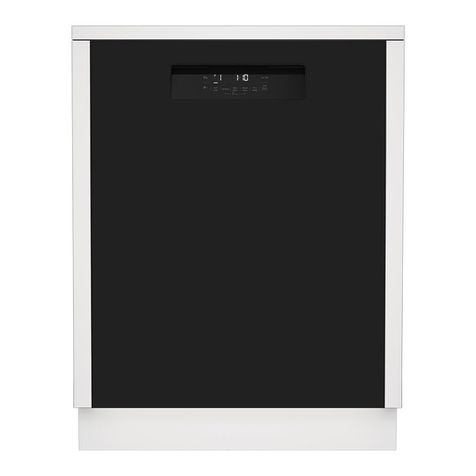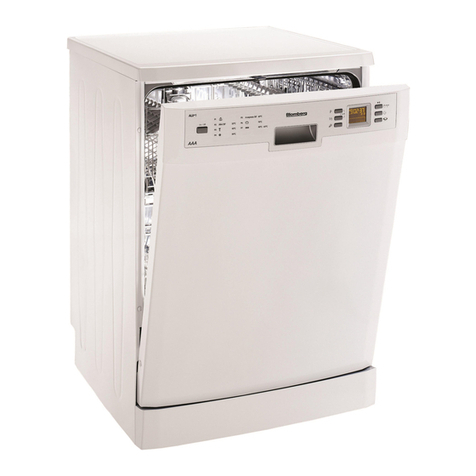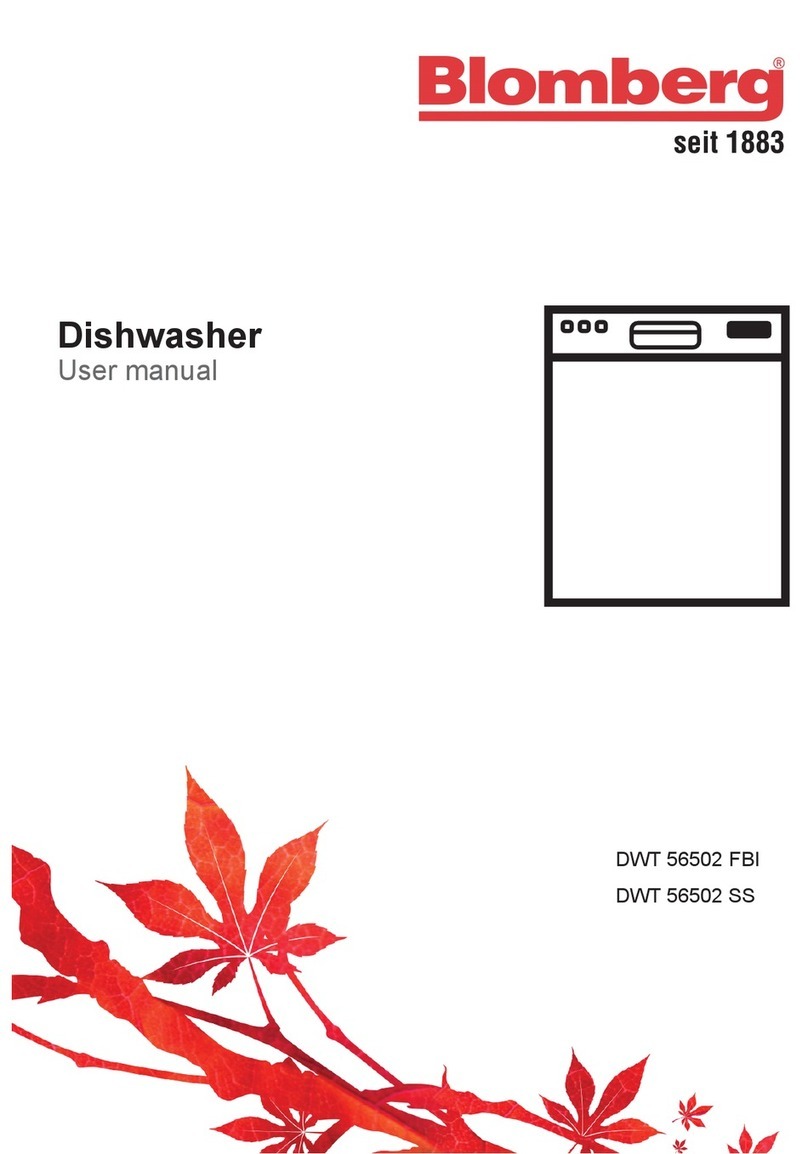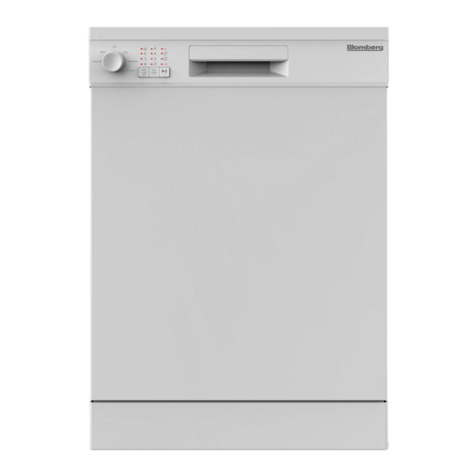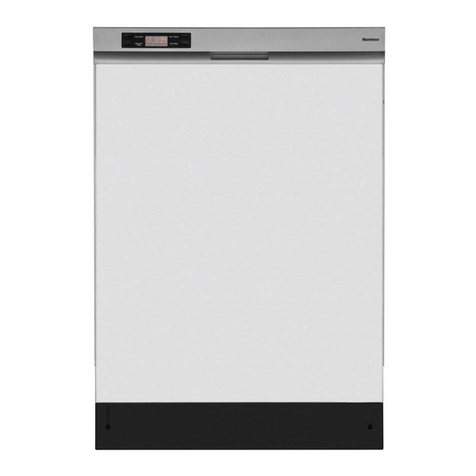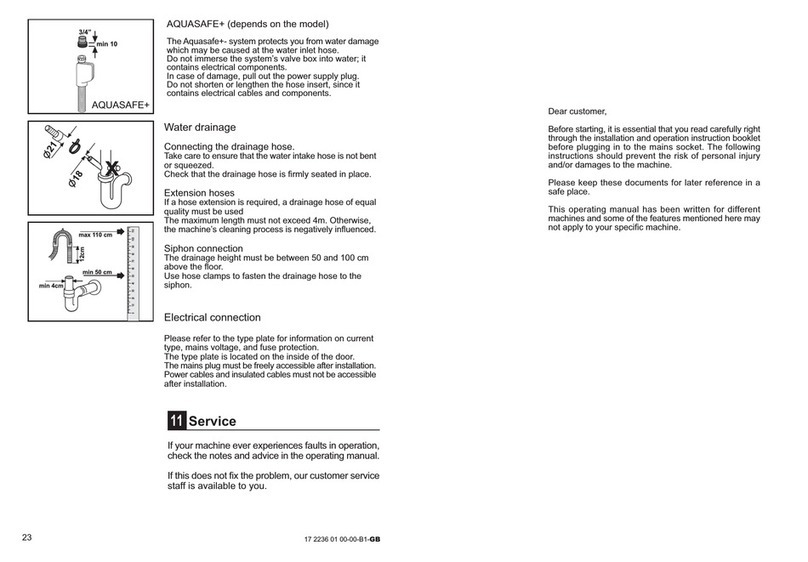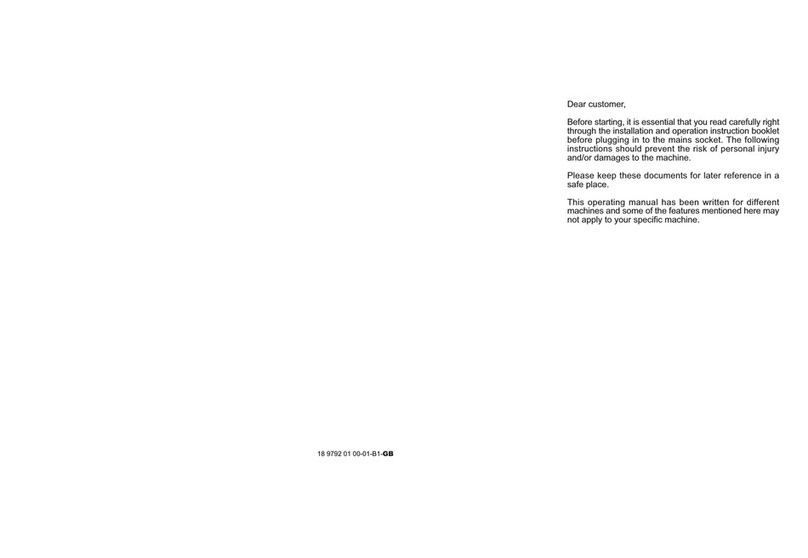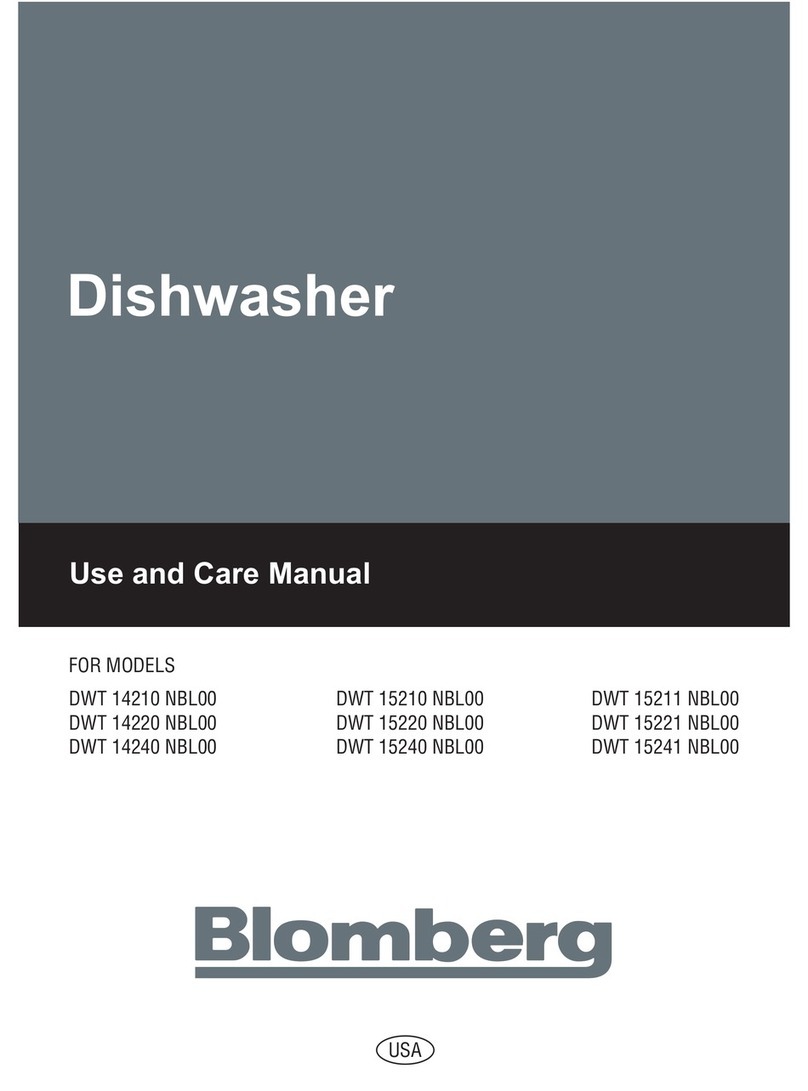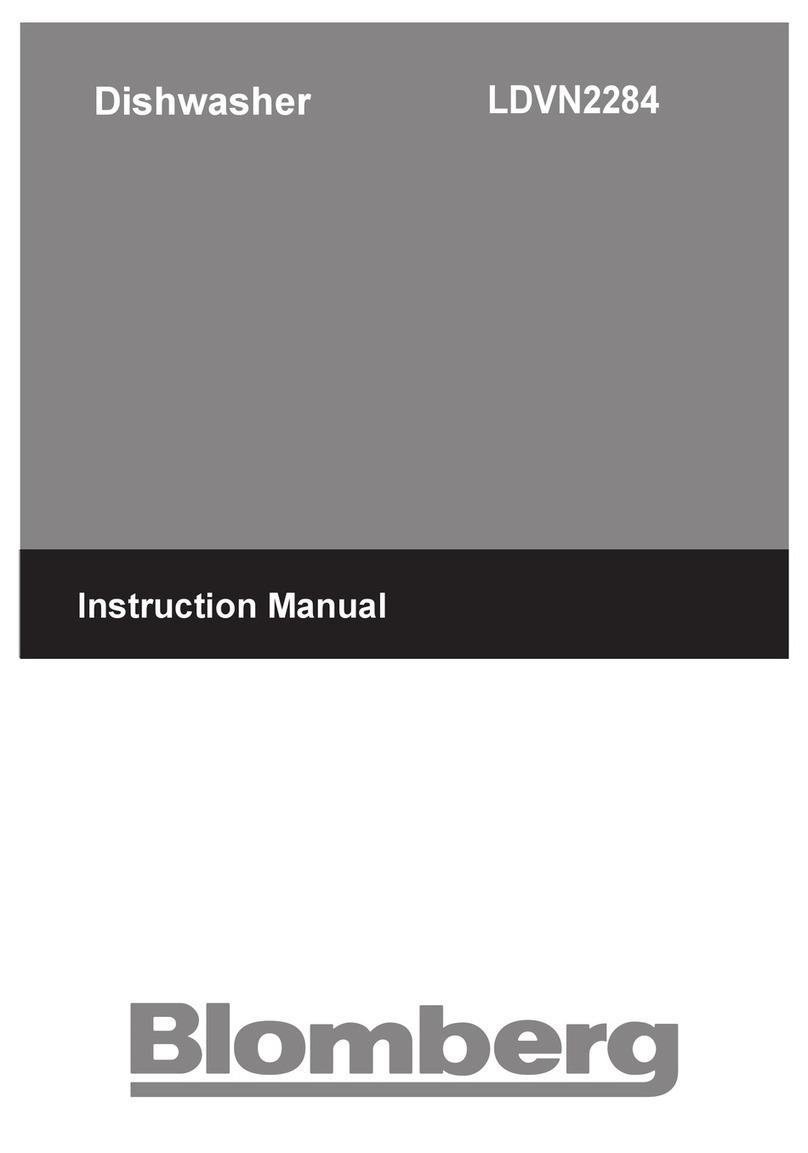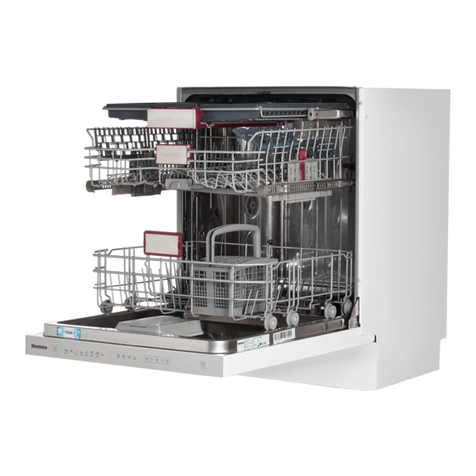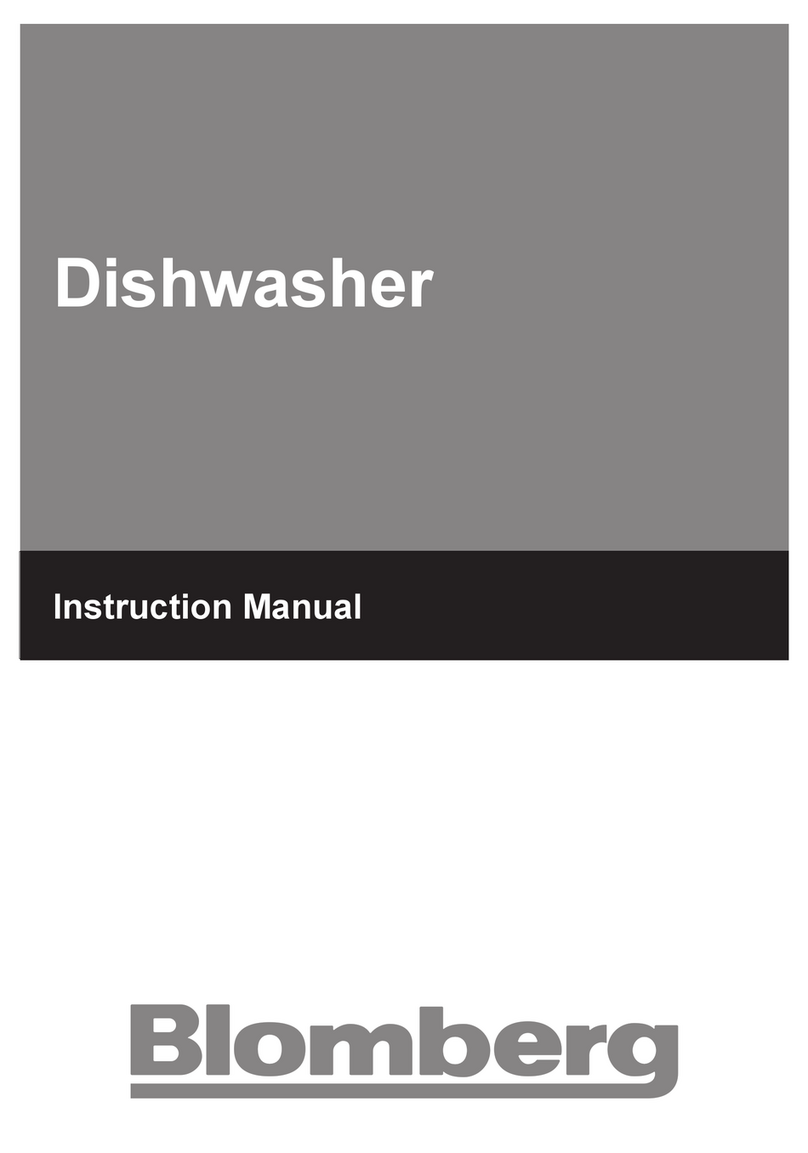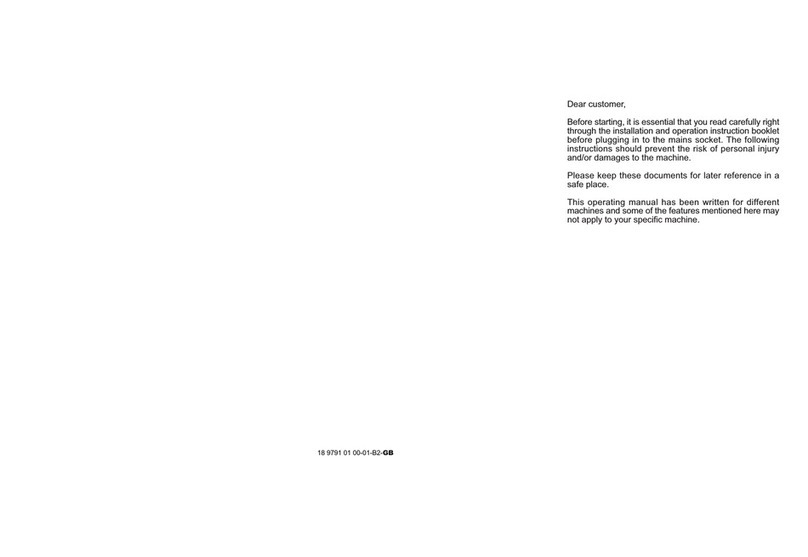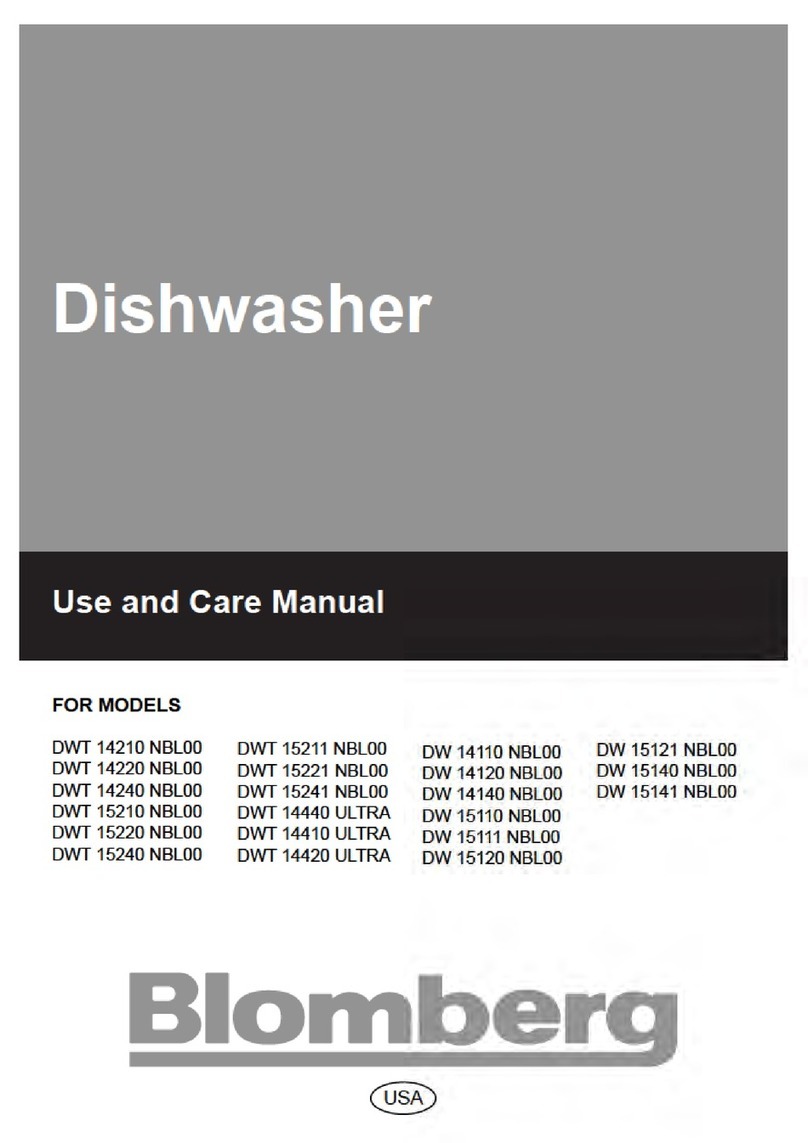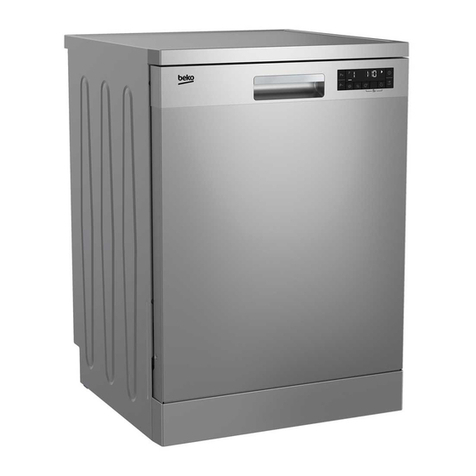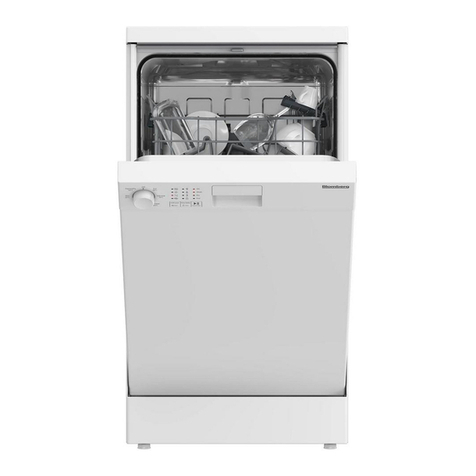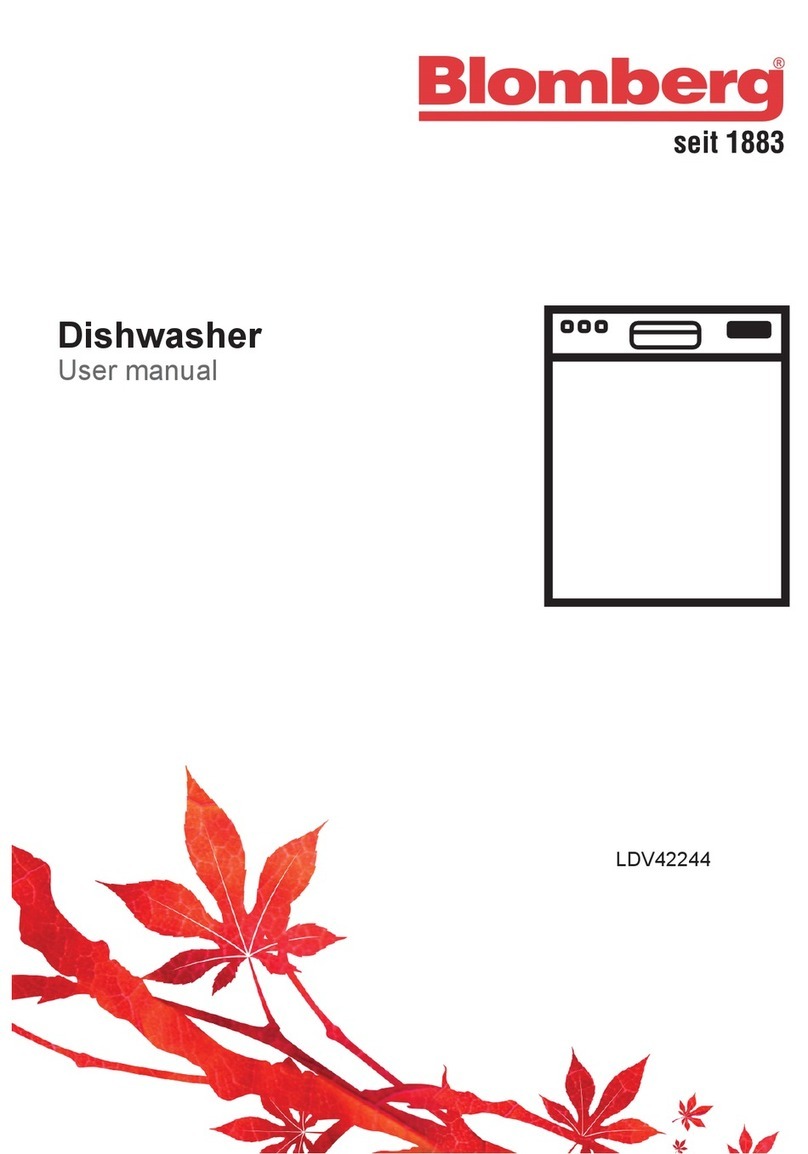9
Detergents
There are 3 types of detergents:
1. Phosphate and containing chlorine
2. Phosphate containing, no chlorine
3. Neither containing phosphate nor chlorine
The new compact powders are normally phosphate free. As phosphates have water softening
properties, we s ggest yo add salt to the salt container even if the hardness of yo r water
is only 6°dH. In hard water areas, if a phosphate free detergent is sed, white marks on the
dishes and glasses may be observed. It may be prevented by increasing the amo nt of
detergent. Detergents witho t chlorine have less bleaching effect. Colo red stains may not
be f lly removed. Choose a programme with a higher wash temperat re.
Attention
Always store your detergents in locations which are cool, dry and out of the reach of children.
Pour the detergent into the detergent dispenser before turning the machine on.
Too much detergent may mean that the detergent does not dissolve properly and dishes are
scratched.
TWO-IN-ONE AND THREE-IN-ONE DETERGENTS
Yo will obtain the best res lts from yo r dishwasher if yo se a separate detergent, rinse
aid and water-softening salt.
Detergent man fact rers also prod ce combined detergents known as two-in-one and three-
in-one.
Three-in-one: These prod cts contain detergent, rinse aid and water-softening salt.
Two-in-one: These prod cts contain detergent and either rinse aid or water-softening salt.
In general, yo will obtain satisfactory res lts from combined detergents only nder specific
sage conditions. These detergents contain predetermined amo nts of rinse aid and/or softening
salt. This means that yo cannot adj st the amo nt of water-softening salt and rinse aid that
yo se to s it the water hardness level in yo r home.
Yo sho ld bear the following points in mind when sing s ch detergents:
- Be s re to check the specifications of the prod ct yo are sing and whether it is a combined
prod ct or not.
- Follow the instr ctions on the packet when sing these prod cts.
- The use of these roducts at the correct a liance settings will ensure economical
use of salt and/or rinse aid.
- If the detergent is in tablet form, never place these in the internal section or c tlery basket
of the dishwasher. Always place the tablets in the detergent dispenser of the detergent holder.
Using three-in-one detergent: detergent, softening salt and rinse aid
- These detergents will not give yo the same drying performance that yo can obtain by sing
separate detergent, salt and rinse aid. To increase the drying performance:
P t yo r appliances rinse aid setting at 1 and apply rinse aid. When the rinse aid is sed
p, add more rinse aid to the rinse aid dispenser.
- If yo se combined detergents with a rinse aid setting higher than 1, contact with the hands
may leave rainbow-colo red water stains on the washed items and inside the machine.
- If yo se combined detergents witho t adding salt, lime scale may form especially on
glasses. To avoid lime scale formation:
P t yo r appliances water softener setting at 1 and add salt. When the salt is sed p,
add more salt to the water softener.
Using two-in-one detergent: detergent and softening salt
- These detergents do not contain rinse aid so yo need to se the rinse aid setting as
described in the man al, making s re that there is rinse aid in the rinse aid dispenser with
every wash and that yo refill the rinse aid dispenser with rinse aid every time it is empty.
Using two-in-one detergent: detergent and rinse aid
- These detergents will not give yo the same drying performance that yo can obtain by
sing separate detergent, salt and rinse aid. To increase the drying performance:
14
nIs the machine plugged in?
nAre all fuses operative?
nIs the water supply fully turned on?
nIs the dishwasher door closed firmly?
nHave you pressed the On/Off button?
nAre the filters clogged?
Trouble shooting
Cleaning the spray arms
Dirt or calcium residue may block the nozzles on the
spray arms. For this reason, regularly check the spray
nozzles.
Lower spray arm
Upper spray arm
1. Remove the lower basket from the machine.
2. Pull off the lower spray arm in an upward direction
( ).
3. Loosen the fastening screw of the upper spray arm
and pull off the spray arm ( ).
4. Clean the spray arms under running water.
5. Replace the spray arms.
Warning
Ensure that the fastening screws are screwed tight.
Cleaning the filter inset in the water inlet hose
(depending on the model)
Dirt from deposits in the water pipes is prevented by a
filter in the water inlet hose. Check the filter and the water
inlet from time to time.
1. Close the water tap and unscrew the water inlet hose.
2. Take out the filter and clean it under running water.
3. Replace the cleaned filter.
4. Fasten the water inlet hose to the water tap again.
8
What if the dishwasher will not run:
1
2
A
B
1
A
2B
